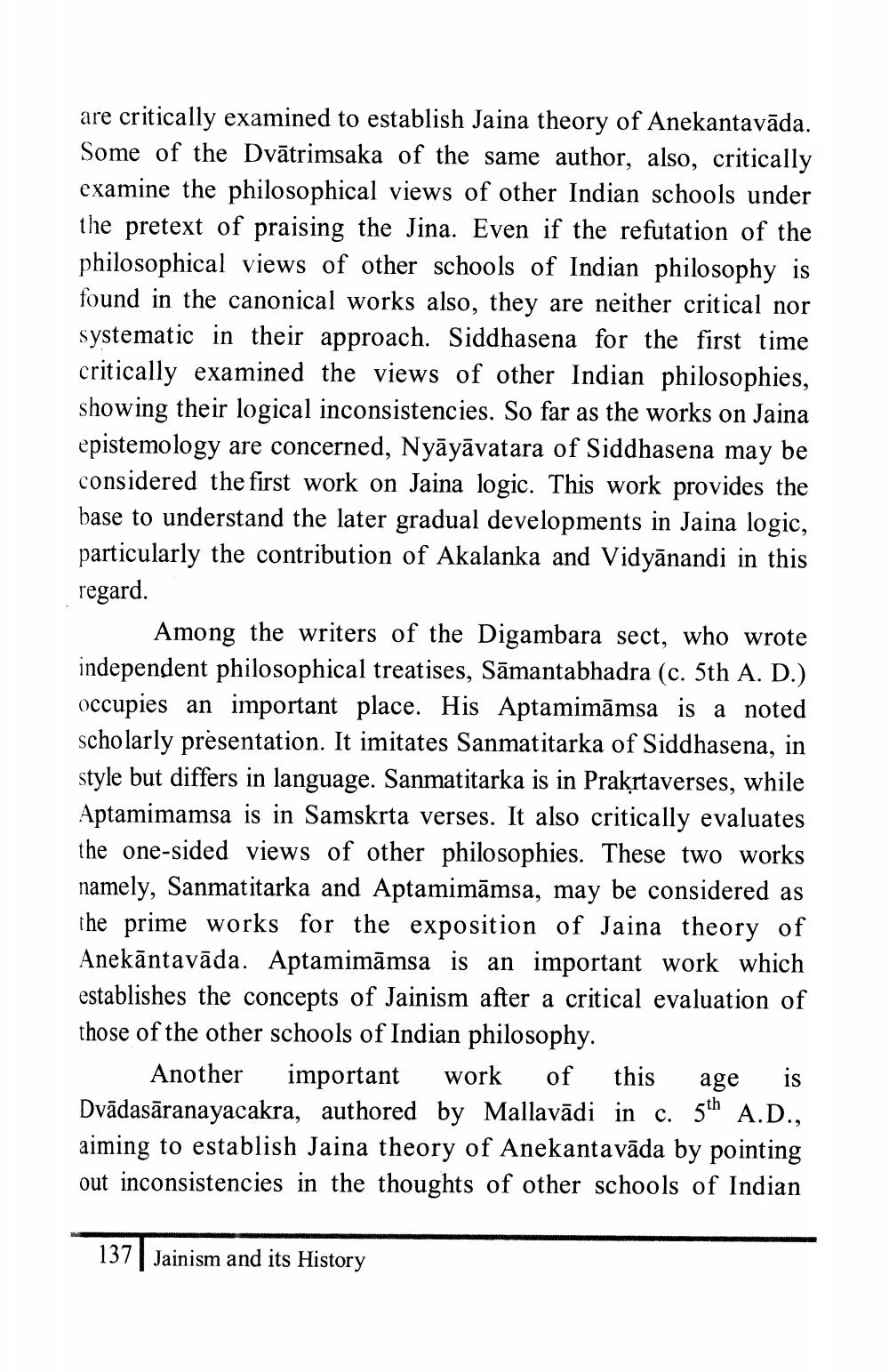________________
are critically examined to establish Jaina theory of Anekantavāda. Some of the Dvātrimsaka of the same author, also, critically examine the philosophical views of other Indian schools under the pretext of praising the Jina. Even if the refutation of the philosophical views of other schools of Indian philosophy is found in the canonical works also, they are neither critical nor systematic in their approach. Siddhasena for the first time critically examined the views of other Indian philosophies, showing their logical inconsistencies. So far as the works on Jaina epistemology are concerned, Nyāyāvatara of Siddhasena may be considered the first work on Jaina logic. This work provides the base to understand the later gradual developments in Jaina logic, particularly the contribution of Akalanka and Vidyānandi in this regard.
Among the writers of the Digambara sect, who wrote independent philosophical treatises, Samantabhadra (c. 5th A. D.) occupies an important place. His Aptamimāmsa is a noted scholarly presentation. It imitates Sanmatitarka of Siddhasena, in style but differs in language. Sanmatitarka is in Prakrtaverses, while Aptamimamsa is in Samskrta verses. It also critically evaluates the one-sided views of other philosophies. These two works namely, Sanmatitarka and Aptamimāmsa, may be considered as the prime works for the exposition of Jaina theory of Anekāntavāda. Aptamimāmsa is an important work which establishes the concepts of Jainism after a critical evaluation of those of the other schools of Indian philosophy.
is
Another important work of this age Dvādasāranayacakra, authored by Mallavādi in c. 5th A.D., aiming to establish Jaina theory of Anekantavāda by pointing out inconsistencies in the thoughts of other schools of Indian
137 Jainism and its History




